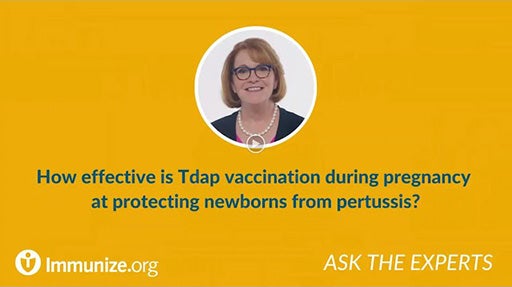Yes. Tdap vaccination is routinely recommended to be given at 27 through 36 weeks’ gestation during every pregnancy. This CDC recommendation is endorsed by the American College of Obstetricians and Gynecologists (ACOG), the American College of Nurse-Midwives (ACNM), the American Academy of Pediatrics (AAP), and the American Academy of Family Physicians (AAFP). Tdap given during one pregnancy will not provide sufficient protection for subsequent pregnancies. In June 2011 ACIP first voted to recommend that pregnant people who have never received the Tdap vaccine be vaccinated to optimize the concentration of maternal antibodies transferred to the fetus. ACIP made this recommendation with the goal of protecting newborns with maternal antibodies and decreasing the risk of transmission of pertussis to infants shortly after birth. In October 2016, ACIP voted to recommend administering Tdap vaccination early in the 27- through 36-week “window” to maximize passive antibody transfer to the infant. Mothers who have never received Tdap and who do not receive it during pregnancy should receive it immediately postpartum.
Fewer babies are hospitalized for pertussis when Tdap is given during pregnancy rather than during the postpartum period. A large U.S. study found an 85% reduction in the risk of pertussis in infants under 2 months of age whose mothers were vaccinated with Tdap at 27 through 36 weeks’ gestation, compared to infants whose mothers were vaccinated in the hospital immediately following delivery.
When a mother gets Tdap during pregnancy, maternal pertussis antibodies transfer to the newborn, protecting the baby against pertussis in early life, before the baby is old enough to have received vaccination with DTaP. Tdap also protects the mother, making it less likely that she will get infected with pertussis during or after pregnancy.
Recommendations for the use of Tdap in pregnancy are covered in detail here: www.cdc.gov/mmwr/volumes/67/rr/pdfs/rr6702a1-H.pdf, pages 22–23.
